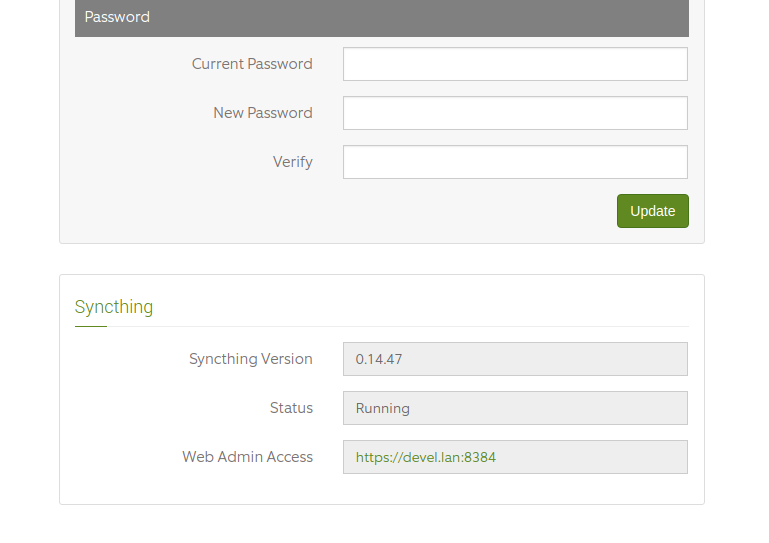
User Dashboard widgets are provided by the app when you install them (and removed if you un-install the app). They are useful in conveying information to end-users who login to Webconfig and are looking for status or direction on a particular app.
One typical use case is to show the status and provide a link to additional, web-based applications - point in question: SyncThing.
Unlike a admin dashboard widget, a user dashboard controller is not constrained under a naming convention. Typically, the name of the controller would end in _widget to convey this use case.
You can have any number of controllers show up under a user's dashboard for any given app.
Let's say you want to display some information to a user by creating a controller as follows:
access_widget.php.This controller can pull, like any other controller, information out of the ClearOS models for end display in a view you also create.
Once your controller and view(s) have been completed, you ned to hook into the Webconfig framework. To do this, simply edit the /deploy/info.php app definition/metadata file and add:
/////////////////////////////////////////////////////////////////////////////
// User Dashboard Widgets
/////////////////////////////////////////////////////////////////////////////
$app['user_dashboard_widgets'] = [
'syncthing/access_widget',
];where you would replace syncthing (the base app in this example) with your app and the specific name of your controller. As you can see, the user_dashboard_widget attribute accepts an array of controllers that allow you to add as much content as you wish.
As mentioned above, this extension to the framework can be useful for display information to users on their dashboard. For the case of Syncthing, it servers as a status indicator and reminder of where they can access their Syncthing account to manager/configure their settings.

Copyright © 2009- ClearCenter